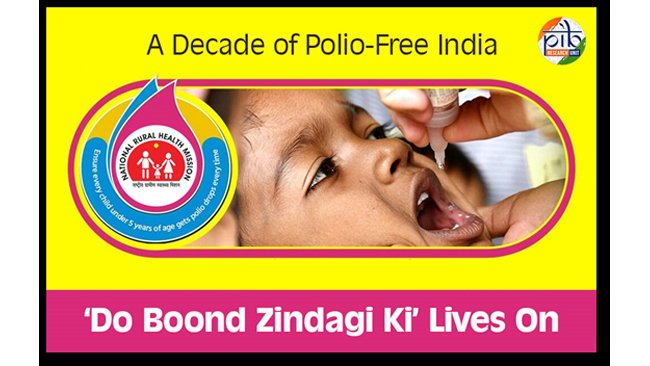

New Delhi, November 20,2024.
India’s achievement of polio-free status in 2014 represents one of the most significant successes in global public health. The eradication of polio was not a singular event, but the culmination of decades of dedicated efforts, starting with India’s participation in the Global Polio Eradication Initiative (GPEI) and complemented by the robust national immunization efforts under the Universal Immunization Programme (UIP). The strategic integration of new vaccines, innovative surveillance systems, and government-led immunization campaigns played a crucial role in making India polio-free. This achievement was made possible through the tireless efforts of the Government of India in partnership with key global organizations, including UNICEF, the World Health Organization (WHO), the Bill & Melinda Gates Foundation, Rotary International, and the Center for Disease Control and Prevention (CDC). Together, they mobilized resources, provided technical expertise, and created widespread public awareness about the critical need to vaccinate every child under five against polio.
Immunization in India
India’s immunization efforts can be traced back to 1978, when the Expanded Programme on Immunization (EPI) was launched. This program aimed to provide vaccines to children against various diseases. In 1985, this program was renamed the Universal Immunization Programme (UIP), broadening its reach to rural areas beyond urban centers. Over time, the UIP became an integral part of several national health initiatives, including the National Rural Health Mission (NRHM), launched in 2005 to improve the health of rural populations.
Today, UIP is one of the world’s largest public health programs, targeting over 2.67 crore newborns and 2.9 crore pregnant women annually, providing free vaccines for 12 vaccine-preventable diseases. Polio was one of the first diseases targeted under UIP, and its elimination became a key public health milestone.
Key Milestones in Polio Eradication
- Pulse Polio Programme Launch (1995)
India’s fight against polio took a significant step forward in 1995 with the launch of the Pulse Polio Immunization Programme. The first large-scale vaccination campaign, held on 2nd October 1994 (Gandhi Jayanti) in Delhi, was the precursor to the national Pulse Polio campaign. The campaign used an Oral Polio Vaccine (OPV) strategy, reaching over 1 million children and ensuring every child under five was vaccinated. This model was subsequently scaled up nationwide.
- Inactivated Polio Vaccine (IPV) Introduction (2015)
In line with the Global Polio Endgame Strategy, India introduced the Inactivated Polio Vaccine (IPV) in 2015 as part of its commitment to polio eradication. IPV provides additional protection against polio, especially against type 2 poliovirus, and was gradually introduced in six states before being expanded nationwide by 2016. This switch was essential after the global shift from trivalent OPV (tOPV) to bivalent OPV (bOPV), which excludes the type 2 strain, and IPV ensured continued protection.
- Surveillance and Monitoring
India’s success in polio eradication was largely due to its rigorous surveillance systems, including Acute Flaccid Paralysis (AFP) Surveillance and Environmental Surveillance. The focus on surveillance helped India detect and respond to any potential outbreaks quickly.
- AFP Surveillance: This system involves monitoring cases of unexplained paralysis in children under 15, as this is a common symptom of polio.
- Environmental Surveillance: Monitoring sewage water to detect poliovirus strains also helped identify pockets where the virus may still be circulating.
By maintaining a high level of sensitivity in surveillance, India could track and control any residual poliovirus transmission.
- Political Will and Community Engagement
One key factor behind India’s polio eradication success was the unwavering political will demonstrated by the central and state governments. Political leaders at all levels provided consistent support, ensuring that resources were allocated and the program received the needed attention.
Additionally, community engagement played a pivotal role. Health workers, volunteers, and local leaders helped raise awareness, provided information on the importance of vaccination, and ensured that children in even the most remote areas were immunized. The Pulse Polio campaigns also relied heavily on door-to-door efforts, reaching children in difficult-to-reach areas.
